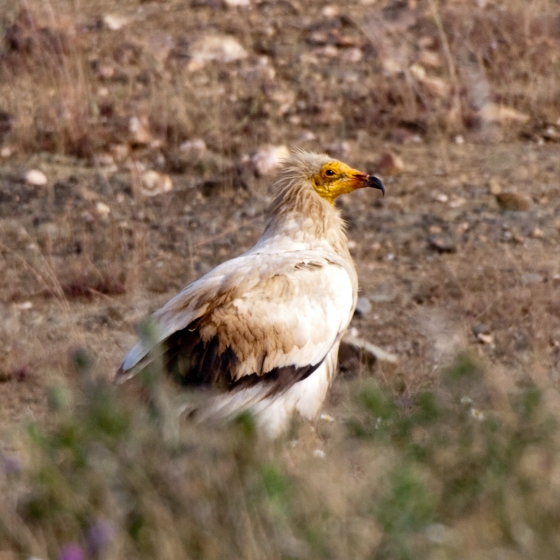Egyptian Vulture

Introduction
A small bird of prey – the adult plumage plumage black and white, the juvenile dark. The Egyptian Vulture's breeding range extends from Western Sahara and Spain east to Northern India and Nepal. This is an extremely rare visitor to the UK.

Key Stats
Status and Trends
Conservation Status
Population Size
Population Change
Population trends of this scarce species are not routinely monitored.
Distribution
This vagrant is too rarely reported to map distribution. Recently an individual arrived on the Scilly Isles and presumably the same bird was seen in various locations in Ireland.
European Distribution Map
Distribution Change
This vagrant is too rarely reported to map distribution change.
Seasonality
This species has been too rarely reported to BirdTrack during 2011–22 to properly assess seasonality.
Movement
Britain & Ireland movement
European movements
EuroBirdPortal uses birdwatcher's records, such as those logged in BirdTrack to map the flows of birds as they arrive and depart Europe. See maps for this species here.
The Eurasian-African Migration Atlas shows movements of individual birds ringed or recovered in Europe. See maps for this species here.
Biology
Survival and Longevity
Survival is shown as the proportion of birds surviving from one year to the next and is derived from bird ringing data. It can also be used to estimate how long birds typically live.
Classification, names and codes
Classification and Codes
- Order: Accipitriformes
- Family: Accipitridae
- Scientific name: Neophron percnopterus
- Authority: Linnaeus, 1758
- BTO 5-letter code: EGYVU
- Euring code number: 2470
Alternate species names
- Catalan: aufrany comú
- Czech: sup mrchožravý
- Danish: Ådselgrib
- Dutch: Aasgier
- Estonian: raipekotkas
- Finnish: pikkukorppikotka
- French: Percnoptère d’Égypte
- German: Schmutzgeier
- Hungarian: dögkeselyu
- Icelandic: Skarngammur
- Italian: Capovaccaio
- Latvian: baltais grifs, Egiptes grifs
- Lithuanian: egiptinis maitgrifis
- Norwegian: Åtselgribb
- Polish: scierwnik
- Portuguese: britango
- Slovak: zdochlinár biely
- Slovenian: egiptovski jastreb
- Spanish: Alimoche común
- Swedish: smutsgam
- Welsh: Fwltur yr Aifft

